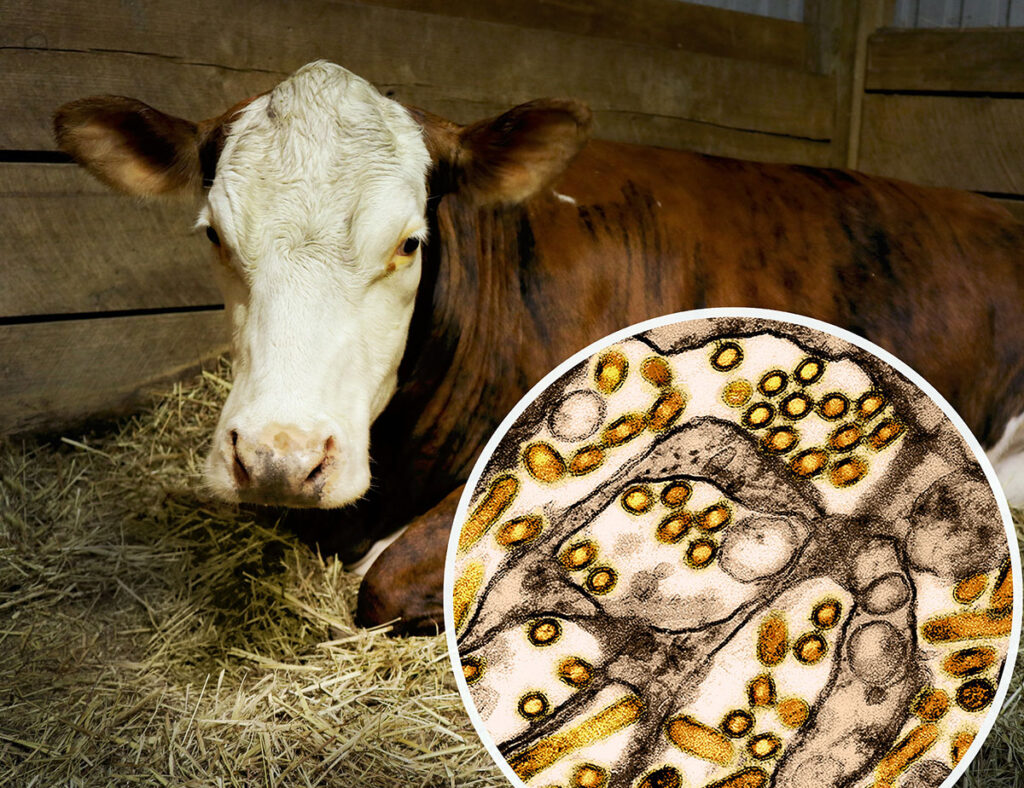A newly published study from the Centers for Disease Control and Prevention (CDC) provides critical insight into the transmissibility and pathogenicity of a highly pathogenic avian influenza (HPAI) H5N1 virus isolated from a dairy farm worker in Michigan. The findings, published in the journal Emerging Infectious Diseases, underscore the potential for mammalian adaptation and highlight the importance of continued surveillance as avian influenza viruses cross species barriers.
The virus studied—A/Michigan/90/2024 (MI90)—was recovered from a human patient who developed conjunctivitis after direct exposure to infected dairy cattle. Researchers used ferrets, the gold standard model for evaluating influenza transmission in mammals, to assess the virus’s ability to spread via direct contact and respiratory droplets, as well as its presence in exhaled aerosols.
Airborne Transmission Confirmed in Ferret Model
In experiments simulating both direct contact and airborne exposure, MI90 transmitted efficiently among ferrets. All six ferrets cohoused with infected animals became infected, and 50% of those housed in adjacent cages (with no physical contact) also acquired the virus via respiratory droplets. This finding confirms the virus’s capacity for airborne transmission in mammals.
Moderate Disease Severity
Although the virus caused noticeable illness—such as fever, lethargy, sneezing, and nasal/ocular discharge—it was not lethal in ferrets. The animals experienced moderate weight loss (averaging 9.8%) and transient fever, but all survived the 21-day study. The virus was detected primarily in the respiratory tract, though limited spread to the brain and gastrointestinal tissues was also observed.
Viral Shedding and Aerosol Release
Ferrets shed high levels of virus nasally, with peak titers between 4.7–5.4 log₁₀ PFU/mL during the first five days post-infection. Airborne virus was measurable as early as day two, with infectious particles reaching up to 133 PFU/hour at peak, affirming the virus’s potential for airborne dissemination in close-contact environments.
Genetic Insights and Public Health Implications
Genetic analysis revealed that while MI90 lacks the E627K mutation (associated with increased replication in mammals) found in a similar H5N1 virus from a Texas dairy worker, it does contain other mammalian-adaptive markers (such as M631L in the PB2 gene). Despite lower virulence compared to the Texas strain, MI90 transmitted at comparable levels, suggesting that different genetic configurations can still enable efficient spread in mammalian hosts.
“Because avian H5N1 viruses cross the species barrier and adapt to dairy cattle, each associated human infection presents further opportunity for mammal adaption. This potential poses an ongoing threat to public health and requires continual surveillance and risk assessment of emerging viruses to improve our ability to predict and prepare for the next influenza pandemic.”
The study reinforces the ongoing threat posed by clade 2.3.4.4b H5N1 viruses, which continue to cause widespread infections in wild birds and spillover events in mammals—including humans. The recent emergence of infections linked to dairy cattle further elevates concern, as each cross-species transmission presents an opportunity for viral evolution and increased pandemic risk.
Surveillance and Preparedness
These findings highlight the critical need for continued virological surveillance in both animal and human populations, particularly in settings where humans are in close contact with infected livestock. Early detection and detailed risk assessments of emerging influenza strains are essential for informing pandemic preparedness strategies.
Brock N, Pulit-Penaloza JA, Belser JA, et al. Avian Influenza A(H5N1) Isolated from Dairy Farm Worker, Michigan, USA. Emerging Infectious Diseases. 2025;31(6):1253-1256. doi:10.3201/eid3106.250386


